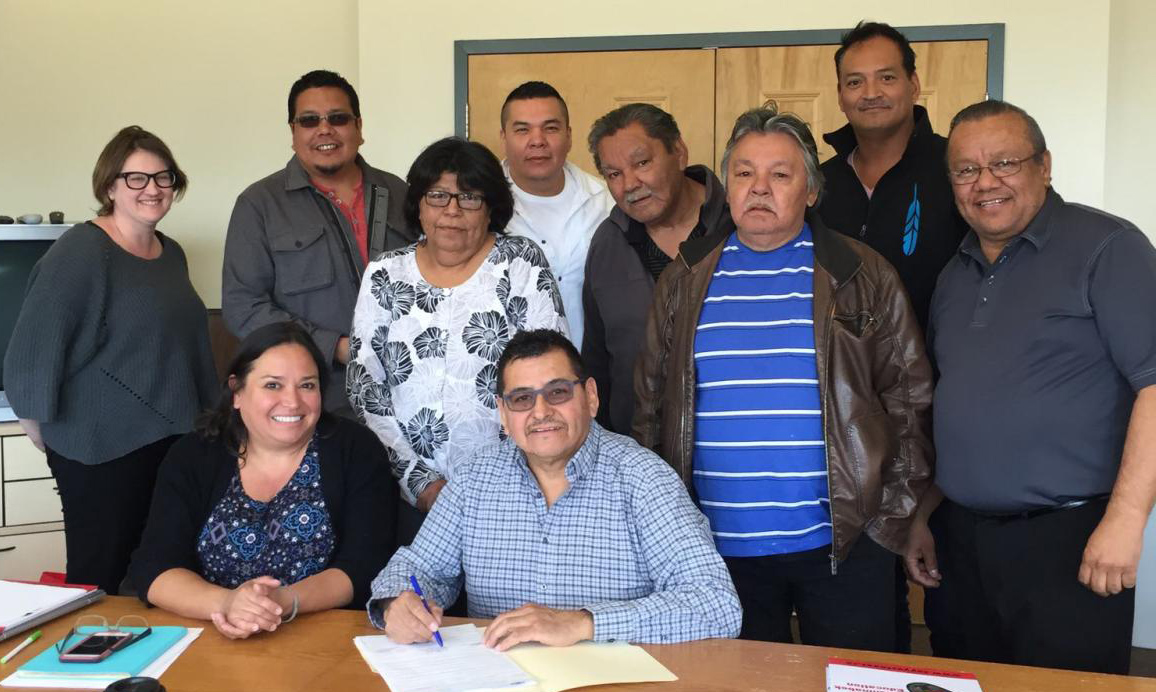Moving forward with the Anishinabek-Ontario Master Education Agreement

By Marci Becking
Earlier this month, Pic Mobert First Nation joined 11 other Anishinabek Nation communities and submitted a band council resolution in support of signing the Master Education Agreement with Ontario in August.
Georgina Island, Aamjiwnaang, Biitigong Nishnaabeg, Aundeck Omni Kaning, Biinjitiwaabik Zaaging Anishnaabek, Chippewas of Rama, Wahnapitae, Munsee Delaware, Nipissing, Wasauksing and Atikameksheng Anishnawbek have also submitted BCRs to move forward in education with the Master Education Agreement (MEA). Other First Nations are scheduled to send their BCRs as well.
Aamjiwnaang Chief Joanne Rogers says that she is excited with the opportunity the MEA will bring to her community.
“The MEA will give our Elders as well as our whole community resources [and the] opportunity to be involved in Aamjiwnaang’s school curriculum,” says Chief Rogers. “That to me is the best thing to happen ever! We now have the opportunity to say what we feel our children should be learning [for example] to know about our treaties and who we are and also to work in partnership with the Lambton Kent School Board.”
Nipissing First Nation Chief Scott McLeod says in signing of this historic agreement, the MEA ensures that Nipissing First Nation students will receive additional supports and resources, both financial and academic, so that they are successful in their education career.
“Nbisiing Secondary School will also benefit from additional funding to expand programming and continued curriculum development,” says Chief McLeod. “A cooperative, collaborative relationship with our local school boards will enhance student success and student well-being.”
Chief Donna Big Canoe of Georgina Island agrees.
“The MEA will shift our relationship with our local school board from an arrangement to a partnership where we are formally and equally recognized for our role in educating our children,” says Chief Big Canoe. “Further, it will formally identify the alignment of services and transitions between our First Nation School and provincial schools and ensure our First Nation perspectives are recognized and honoured in those schools. We are glad now that funds have been secured for future generations and committed to meet the needs of our children throughout their education.”
The Master Education Agreement aims to incorporate First Nations history and culture into provincial curriculum and support the development of new curriculum and resources for teachers. There will also be a co-creation of curriculum and pedagogy with the communities who are included in the Anishinabek Education System. The curriculum and pedagogy will be more compatible with First Nations learning patterns that can be delivered in both on-reserve schools and provincial schools.
The MEA will address practical education issues between First Nations and Ontario to support transferability of students between education systems and to support student achievements. The AES will work to develop coordinated and consistent access for First Nation educators and administrators in the on-reserve schools to provincial professional development opportunities and other support services.


